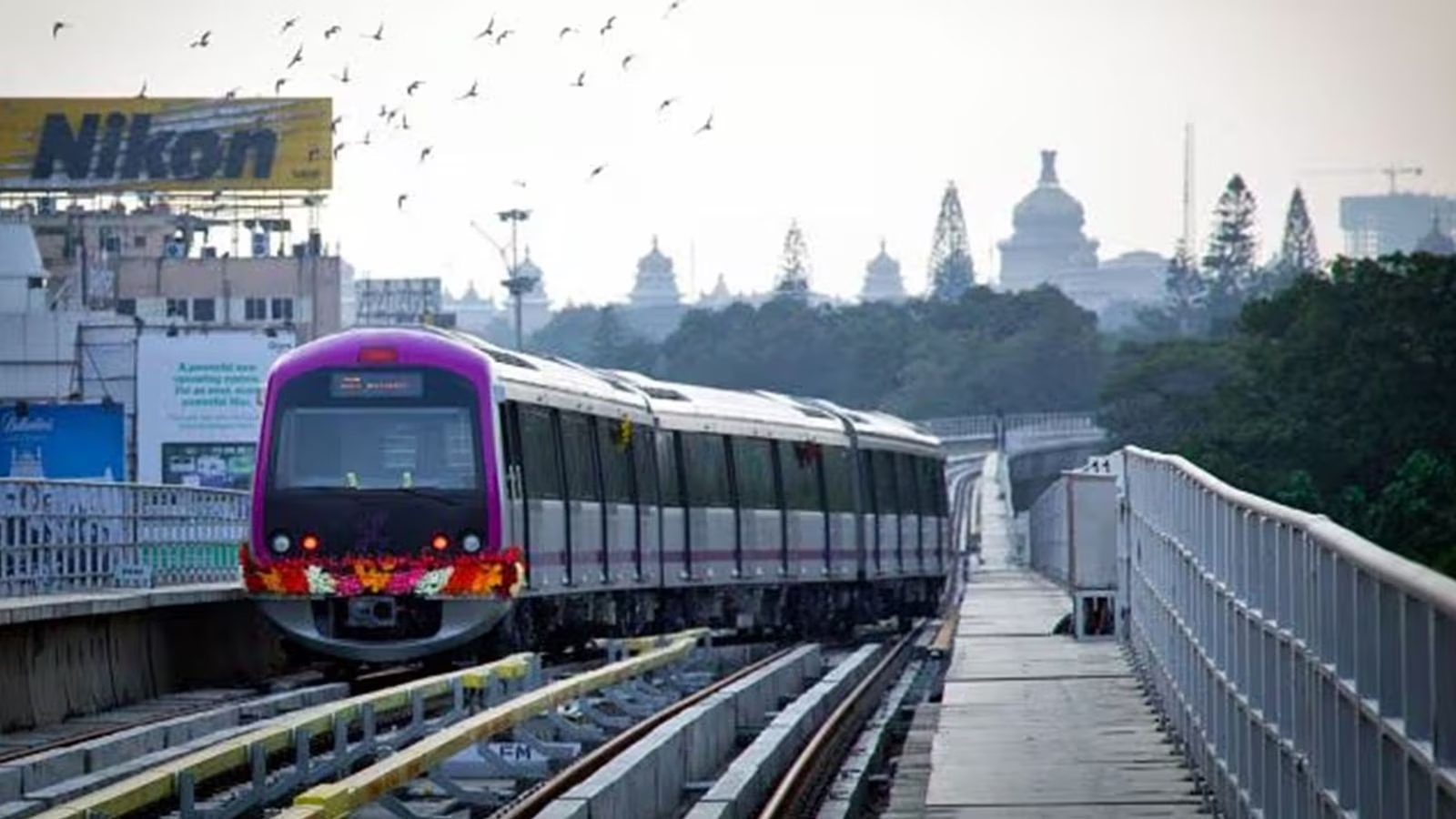 |
|
The recent 46% increase in Bengaluru Metro fares, implemented by the Bengaluru Metro Rail Corporation Limited (BMRCL), has triggered significant public discontent and a noticeable decrease in ridership. The fare revision, which saw the maximum fare jump from Rs 60 to Rs 90, resulted in an immediate 4% drop in daily passengers on the first Monday following the hike. This translates to a loss of approximately 34,000 riders compared to the usual Monday ridership of over 8.6 lakh. While BMRCL initially attributed part of the decline to the Aero India 2025 airshow, the substantial fare increase remains the primary focus of public criticism, especially considering the Metro's status as one of India's most expensive.
The public outcry, fueled by complaints of disproportionate fare increases on certain routes (with some commuters reporting a 100% increase), has prompted a response from BMRCL. Managing Director Maheshwara Rao has announced a review of the fare hike to address perceived anomalies. He emphasized that the corporation is bound by the recommendations of the Fare Fixation Committee (FFC), a statutory body responsible for determining fare revisions. The FFC, constituted only in 2024, comprised a retired high court judge and representatives from the central and state governments. This highlights a potential delay in establishing a necessary oversight body, potentially contributing to the controversial fare hikes.
BMRCL defends the fare hike by citing substantial financial obligations, particularly loan repayments totaling Rs 500-800 crore annually. These obligations include interest payments on borrowed funds and investments made to expand and upgrade the Metro network. Significant infrastructure projects, such as station upgrades costing around Rs 300 crore (Rs 6 crore per station) and the purchase of new trains for upcoming lines (estimated at Rs 1,600-2,000 crore), further contribute to the financial burden. The corporation projects an operational profit of Rs 200 crore in 2025-26; however, after accounting for debt servicing and other expenses, the net profit is expected to be considerably lower at approximately Rs 20 crore. This financial reality underpins the BMRCL’s justification for the fare increase.
Despite past profitability (a record operational profit of Rs 29.3 crore in 2023-24), the BMRCL argues that these gains are insufficient to address the overwhelming financial pressures. The corporation points to escalating project costs, including a 30% increase in some cases, and the responsibility of the Karnataka government, as per a Memorandum of Understanding (MoU), to partially fund these cost overruns. Moreover, the looming costs associated with expanding the Metro fleet and introducing additional amenities like platform screen doors necessitate increased revenue generation. The revenue from the new fares is intended to partly cover these infrastructure enhancements.
However, the fare hike has faced sharp criticism from political figures and urban mobility experts alike. BJP MP P C Mohan accused the Congress government of prioritizing freebies over essential infrastructure, highlighting the delay in allocating funds for the second phase of the Bengaluru Namma Metro. He argued for exploring alternative revenue streams, particularly non-fare box revenues like leasing station air rights, a strategy employed successfully in other cities. He contends that such measures could alleviate the need for drastic fare increases, aligning the Bengaluru Metro with global best practices in affordable public transport.
Urban mobility expert Satya Arikutharam raised concerns about the independence of the Fare Fixation Committee, citing BMRCL officials' involvement in their foreign study tour to Singapore and Hong Kong. He criticized the fare increase’s impact on ridership and emphasized the need for an independent regulatory body, such as the Bengaluru Metropolitan Land Transport Authority (BMLTA), to ensure a fairer and more commuter-friendly approach to fare determination. The lack of such an independent body, hindered by bureaucratic and political inaction, currently limits public accountability mechanisms.
The current situation underscores a complex interplay between the need for sustainable financial management of the Bengaluru Metro and the necessity to maintain affordability and accessibility for commuters. The implementation of the fare hike, although justified by BMRCL's financial projections, has triggered a public backlash that highlights the challenges of balancing financial sustainability with the social and economic needs of the city’s population. The ongoing review and potential adjustments to the fare structure will be crucial in determining the long-term viability and public acceptance of the Bengaluru Metro system.
Source: With 4% drop in Bengaluru Metro ridership, BMRCL to plug fare hike anomalies after public backlash
